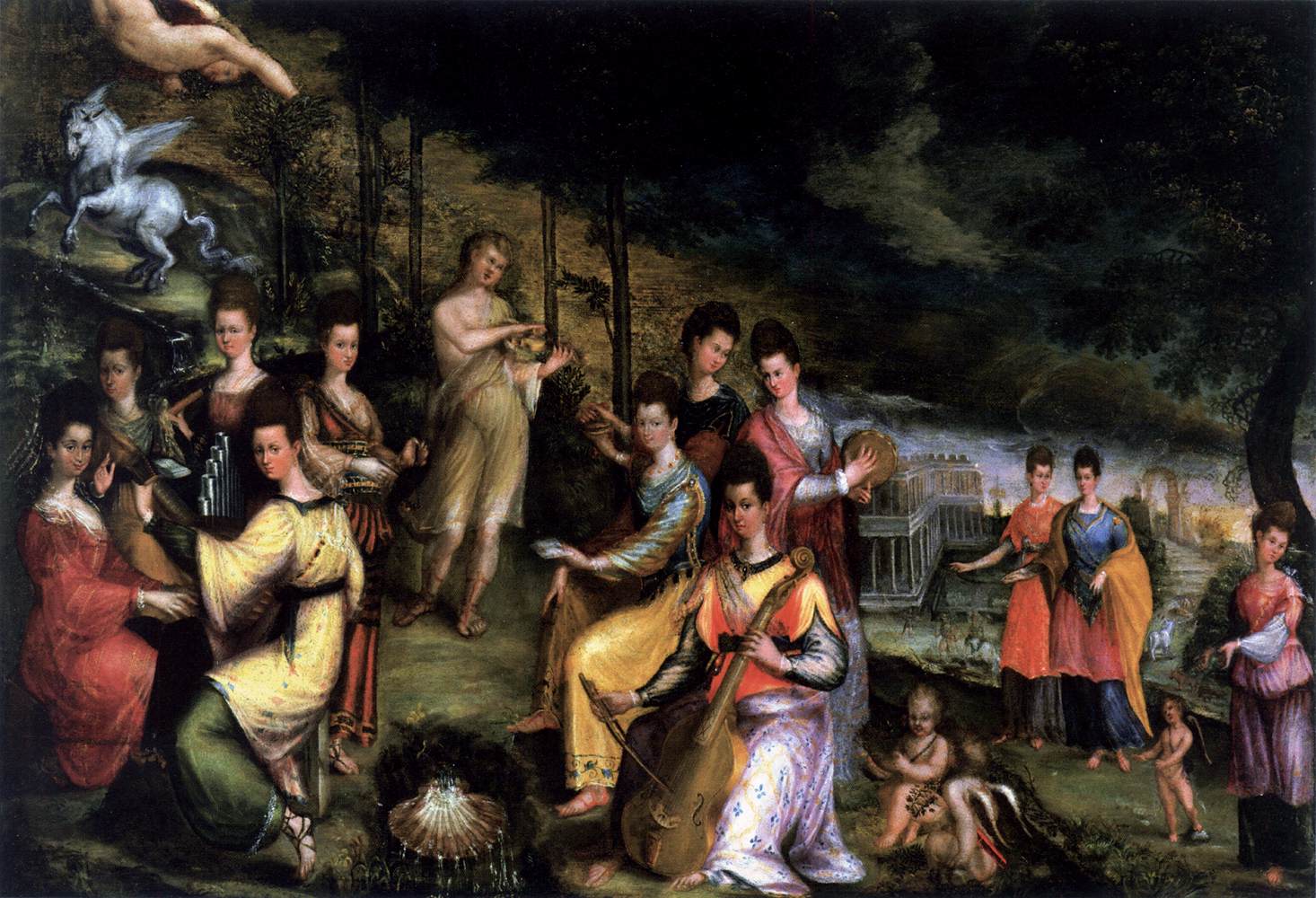Description
The painting "Apollo and the Muses (Parnassus)" by Lavinia Fontana is a masterpiece of Italian Renaissance art of the 16th century. In it, the artist represents Apollo, god of music, poetry and light, in the company of the nine muses, who accompany him on Mount Parnassus.
The painting stands out for its harmonious and balanced composition, which shows the influence of the Bologna school, to which the artist belonged. In it, the muses can be seen in various poses, playing musical instruments and reciting poems, while Apollo, in the center of the scene, holds a lyre and conducts the music.
The coloring of the painting is another of its most interesting aspects. The color palette used is rich and varied, with bright and saturated tones that bring the scene to life. The artist uses a soft and precise brushstroke technique, which allows her to create an effect of depth and luminosity in the work.
The history of the painting is also fascinating. It was commissioned by Cardinal Alessandro Farnese, who acquired it for his private collection. Subsequently, it was transferred to the Farnesio Gallery in Rome, where it remained until it was acquired by the Prado Museum in Madrid in 1911.
Also, there are little-known aspects of the painting that make it even more interesting. For example, Lavinia Fontana is believed to have portrayed herself in the figure of the lute-playing muse in the bottom right of the painting. It has also been speculated that the figure of Apollo is inspired by Cardinal Farnese, who was a great patron of the arts and a great fan of music.
In short, the painting "Apollo and the Muses (Parnassus)" by Lavinia Fontana is an exceptional work of art that combines aesthetic beauty with profound symbology. Its artistic style, its balanced composition, its vibrant color and its fascinating history make it a must-have for any lover of Italian Renaissance art.

